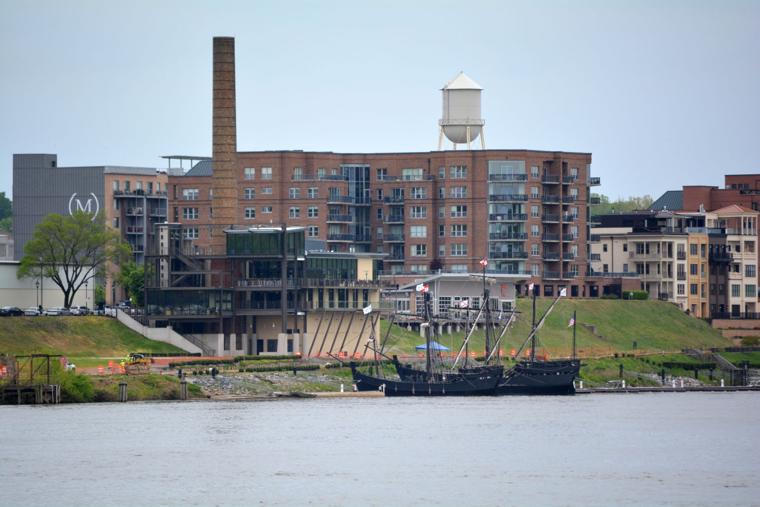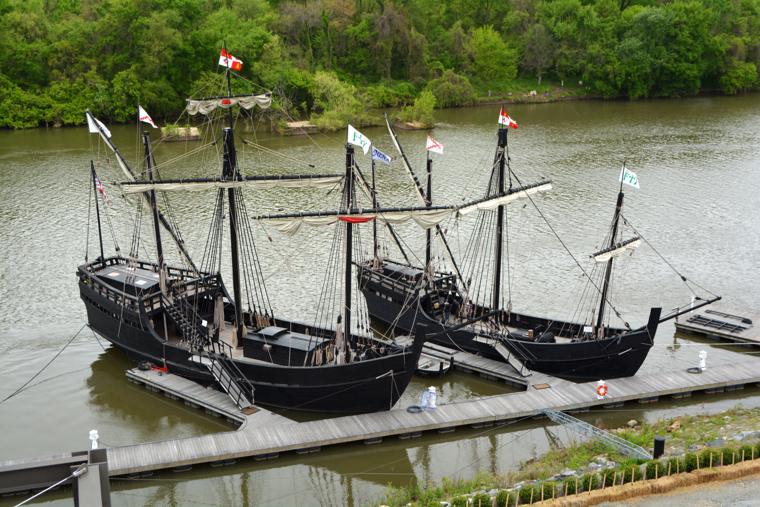I am only about 50 pages into the novel so far, and it lives up to its reputation. It is very difficult for anything, let alone a novel, to truly meet the expectation of greatness. So far, I am pleased to say it has met all of my expectations. I am enchanted. It is whimsical, ironic, satirical, comic, and tragic. I find myself smiling constantly and laughing out loud at times.
This has, of course, led to many interruptions of my husband's work to ask him about everything related to the story and setting. I want to know more about La Mancha.
First, he showed me this clip of the TV show he used to watch as a kid in Spain, and it is adorable:
I think it is great for kids to be introduced to great literature through cartoons and songs!
We are also trying to plan our trip to La Mancha and my husband's descriptions of the region helps shine a light on some of the humor of the novel. The romantic vision we (and Don Quixote) have of knights and chivalry is from A) a different time and a place and B) fiction. Knights did exist and were a large part of feudalism throughout Europe in the Middle Ages/ Medieval times. That is why Medieval Times today is a restaurant where we watch jousting and eat turkey legs.
By the early 1600's, however, Europe had changed politically and economically, and Spain was a strong leader due to its wealth and military prowess. The focus of Habsburg Spain was expansion, trade, colonies, and gold. Cervantes and Don Quixote did not live in Medieval Spain. It was a time of explorers, not Knights. Tall ships and galleons, not horses. My husband and I just recently saw the Nina and Pinta in the river at Richmond, VA when we were there recently at the Boathouse, one of our favorite spots there. My mom took me and my sister to see all three (the Santa Maria was too big for the river in RVA I think) when I was little in the port of St. Augustine, FL. It was a long drive, and my sister and I hardly remember the ships, but I am glad my mom took us. It is funny sometimes how life comes around full circle. And I have to thank my mom for inspiring a love of learning, adventure, and history!
Just think about it. These three little ships sent across the sea blindly by Spain started an entire age of exploration and colonization!
  |
| These photos are from the Richmond-Times Dispatch by Phil Riggan |
These ships, exploration, gold, etc. meant that trade replaced feudalism and merchants replaced knights in the daily life of most Spaniards. There was a king, lords and ladies, and knights (still are today, in fact), but they belonged to the courts of Madrid. They did not wander the countryside spouting verses of love. It was also the Spanish Golden Age for the arts with the most famous Spanish painter Diego Velazquez living and working at the beginning of the 16th century. Literature and art were changing drastically, and the medieval romances were going out of fashion. It was the time of the Italian Renaissance. I know this is meant to focus on Don Quixote and Cervantes, but it worth while to watch this video from Khan Academy about Las Meninas in the Prado Museum:
It was not a time of knights errant who wandered the Spanish countryside. Remember, this was near the same time that Shakespeare was in England. It was a Renaissance, a time of art and some peace, a time of progress and urbanization. It was a time moving forward. Besides, the legends of knights and the chivalric romances were, really, just that: fiction. The famous tales of King Arthur or of El Cid glorified and romanticized the idea of knighthood. In reality, knights were warriors, paid mercenaries, and while they may have followed the code of chivalry, their first priority was to follow the orders of their superiors (not ladies or the Church) and win military battles (not take vows of silence or write poetry). Here is an interesting link for more on knights: "We should be careful not to be blinded by the light refelcted off shining armor."
 |
| El Cid in Burgos |
To make matters even worse for our main character who desperately wishes to be a Knight Errant straight from the medieval romantic poems, songs, and stories is that La Mancha in Spain was probably the worst place to attempt to do so. This region was, and still is, very rural. Named for the Arab word al-mansa, "dryness/wilderness," it is just that. It is a large plain of arid but arable land that stretches for many miles between Madrid and Andalusia. Its economy is based on vineyards, wheat fields, and sheep. And of course, its famous cheese. The somewhat difficult conditions and distance from the seat of the Royal Court meant that La Mancha was never a large or important center of chivalric romances or knights.My husband confirms that it is somewhat of a joke that Cervantes has Don Quixote originate from this region and includes it proudly as a title: Don Quixote de la Mancha. People did not go around dressed in armor or talking about knights in La Mancha in this time period. He cannot keep from laughing as he pictures it in his head, and I can clearly see the wide-eyed, dear-in-headlights look of the Manchego people when they meet Don Quixote.
 |
| Peanut Farm |
I think the idea still works today. I am from Georgia, so I imagine trying to do the same (dressing as a knight and spouting poetry) around the south of Georgia with the peanut farms and the reaction I would get from the people there. At a medieval festival or convention, sure, people would be happy for you to dress as a knight or pretend to be a squire or princess. It would be somewhat normal, familiar at least. But going out into a rural part of southern Georgia dressed like a medieval person and 100% invested in acting the part? I don't think people would approve. Living in Colonial Williamsburg, I see colonial people buying groceries all the time, and after the first few times, I no longer even notice that Lafayette or Thomas Jefferson is in line in front of me buying chips and soda. But, the first time, it was weird.
In large cities like New York or Atlanta, you see weird stuff all the time. There are so many people doing so many things that it all blends together. You are no longer shocked by the strangeness of the way people talk, walk, dress, etc. I've seen cats being walked in Central Park. Naked cowboys sing to you in Times Square. In little five points of Atlanta, I bet a Don Quixote would be stared at a little and asked to pose in pictures, but there wouldn't be much scandal or concern. It'd be one more story, one more interesting character, among many.
However, in the rural South, where less of this type thing happens, where people work long, hard hours and tend to be more practical because of it, where communities are smaller and people like the familiar, such a spectacle would be more shocking. Especially since based on my year of teaching literature to rural teenagers in Virginia, they have not likely even read any of the medieval romances or studied the history of it. They have little use for such things. This is exactly the setting for Don Quixote, and Cervantes was genius in choosing the right place and time.
 |
| Landscape of La Mancha |
Don Quixote's sallies into the world are somewhat successful at the beginning because no one know what to do when confronted by a farmer dressed in bit of pieces of armor and talking strangely. I think of the scene with two friars who are traveling and happen to be next to a carriage with a soldier's wife when Don Quixote passed them. Our knight is convinced that it is a captured princess in the carriage, and the friars are monstrous captors. When he addresses them in the archaic and poetic language of chivalric romances, the friars cannot understand what he means because both the language is foreign and the content is nonsensical. Keep in mind, they know nothing of the carriage or who is in it. They are just trying to get some where and happen to be on the road with a carriage. So, when a man dressed in armor (an very odd thing in itself) accuses them of kidnapping a princess and does so in the form of poetry and archaic language, it takes them time to figure out what is happening. It would have to seem like a practical joke to them, but I doubt elaborate practical jokes like this were popular at the time. Don Quixote uses their complete confusion to his advantage and charges one of the friars and knocks him from his donkey. Both friars run away as soon as possible, still unsure of what has happened or why.
 |
| http://www.online-literature.com/cervantes/don_quixote/12/ |
Don Quixote is able to be successful because there are no princesses, captors, monsters, or knights in La Mancha. So, he manages to shock people into awkward confusion. He interprets their fear of his madness and retreat as signs of victory. Again, imagine someone quoting Shakespeare at a random stranger in a field while dressed in bits and pieces of armor and a bucket on his head. I wouldn't know what to do if confronted by such a person outside the context of a convention or show. And who would imagine that someone would actually charge at you with a horse and lance? People may dress up and act a part, but no one actually believes in that character or attacks you! It is a very amusing conceit for his novel.
I could go on and on, but this was meant to be a brief introduction to the setting of the novel and the region of La Mancha. I have digressed and ran on too long, so I will end with one last item. I recommend streaming this documentary on Netflix Lost in La Mancha (Read more here) and the curse of making a film from the novel.
 |
| Netflix |
No comments:
Post a Comment